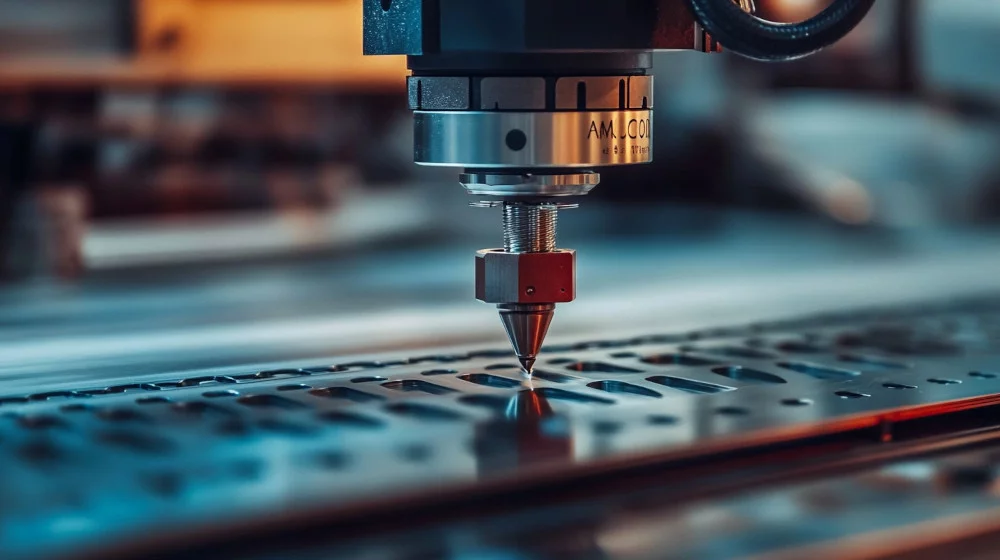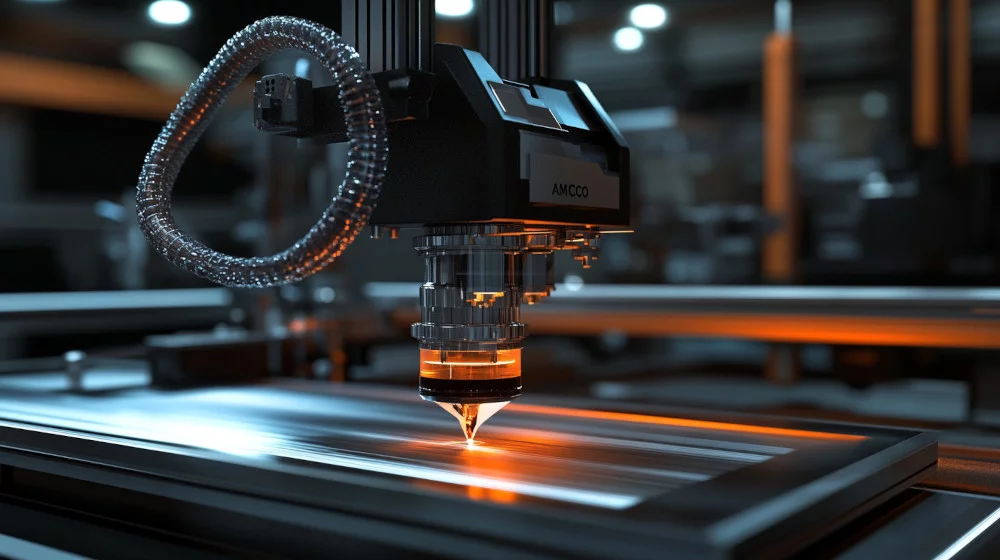
Enhance Productivity and Precision in Your CNC and Laser Operations with AM.CO.ZA Air Pumps
Why Airflow Matters in CNC and Laser Operations
In CNC machining and laser cutting, precision isn’t just an advantage – it’s essential. Stable airflow directly influences critical operational outcomes like cooling, debris removal, and dimensional accuracy. According to manufacturing experts, proper air assistance can boost cutting efficiency by as much as 30%, dramatically reducing heat buildup that could otherwise warp delicate materials or lead to premature equipment failure. When airflow isn’t sufficient, operators frequently face frustrating issues like uneven cuts, excessive charring, or overheating components, all of which result in costly downtime and increased maintenance expenses. In fact, industry studies reveal that inadequate airflow can shorten equipment lifespan by up to 40%, highlighting the necessity of maintaining optimal air delivery. Conversely, investing in high-quality airflow systems consistently yields improved accuracy, significantly lower operational costs, and extended machinery longevity, ensuring both higher productivity and stronger profits in competitive manufacturing environments.
Exploring AM.CO.ZA’s Premium Air Pump Range
Selecting the right air pump can be the difference between seamless productivity and persistent disruptions. AM.CO.ZA addresses varied industry needs with a versatile lineup of premium air pumps, carefully engineered for both small workshops and large industrial setups. The smaller units, ideal for precision-driven crafts such as jewelry engraving or detailed prototyping, offer whisper-quiet operation at under 55 dB—roughly equivalent to a household refrigerator hum, ensuring minimal workspace noise. For larger manufacturing plants demanding higher airflow volumes and sustained performance, AM.CO.ZA provides robust, heavy-duty pumps built with corrosion-resistant components and superior thermal management, effectively minimizing downtime and extending equipment longevity. These pumps are up to 30% more energy-efficient than generic alternatives, translating directly into reduced operating costs. Compared to standard models, AM.CO.ZA’s premium range stands out by offering:
- Advanced noise suppression for quieter workplaces
- Higher durability for reduced maintenance costs
- Enhanced energy efficiency, cutting monthly electricity expenses significantly
By investing in specialized equipment rather than generic solutions, businesses not only enhance operational reliability but also achieve measurable savings and superior overall performance.
Lets look at some practical applications across a few industries
Woodworking and Cabinetry
In woodworking and cabinetry, cleanliness isn’t just about aesthetics, it’s integral to both precision and safety. Removing sawdust and wood chips efficiently ensures machinery accuracy and extends tool life. Industry analyses indicate that inefficient dust extraction systems cause approximately 25% more downtime due to frequent tool replacements and machine maintenance. Conversely, consistent airflow significantly reduces residual debris, improving cutting accuracy by maintaining clear sightlines and sharp tool edges. For instance, professional cabinetmakers note up to a 20% increase in production speeds when implementing effective airflow systems, translating into tangible savings and enhanced output quality.
Signage and Advertising
For signage and advertising professionals, achieving sharp, clean edges on materials like acrylic, plastic, and metal is essential, it’s a direct reflection of quality craftsmanship. High-quality signage firms report that precise airflow management can decrease manual finishing times by as much as 35%, as it drastically reduces the burrs, melted edges, and residual debris that complicate final product detailing. Real-world applications reveal that businesses investing in robust airflow systems consistently deliver higher-quality signage with shorter production cycles, strengthening their market position and client satisfaction rates.
Engraving and Precision Artistry
Precision engraving demands absolute control over every minute detail. Industry leaders stress that maintaining clarity and depth in intricate engravings depends heavily on stable airflow—without it, designs quickly become compromised by debris buildup. According to professional engravers, nearly 40% of workflow interruptions are attributed directly to inadequate debris removal, highlighting the necessity of efficient airflow management. Practical evidence shows engravers using optimized air systems not only achieve finer detail in their art but also drastically reduce operational downtime, increasing productivity by approximately 25% annually.
Aquariums, Fish Ponds, and Hobbyist Setups
In aquariums, fish ponds, and hobbyist aquatic setups, reliable air pumps are not merely beneficial, they’re lifelines. Proper aeration maintains essential oxygen levels, supporting aquatic health and preventing toxic stagnation. Aquaculture experts note that consistent airflow can increase aquatic life survival rates by up to 50%, especially critical in sensitive marine and freshwater ecosystems. Practical cases underscore this necessity: hobbyists employing continuous, stable airflow report significantly reduced mortality rates and healthier fish populations, underscoring the vital role air pumps play in sustaining vibrant aquatic habitats.
Matching Capacity to Machinery and Materials
Picking the correct air pump involves understanding your equipment’s airflow demands alongside material-specific requirements. Dense materials like hardwood, acrylics, or metals generally need stronger airflow to maintain precision and prevent overheating. For example:
- Small desktop lasers (40W-60W) typically perform best with air pumps rated around 50-70 liters per minute (LPM).
- Larger CNC routers or laser cutters (100W and above) handling thick acrylic or metal may need airflow capacities of 150 LPM or higher.
Ensuring your air pump’s output matches your machine’s needs means better quality cuts and fewer wasted materials.
Operational Hours and Workspace Considerations
Think realistically about your workspace environment and operational intensity before deciding on an air pump. Continuous operation in demanding industrial setups requires pumps designed specifically for heavy-duty usage. Conversely, quieter, compact pumps work perfectly in smaller studios or shared workshop spaces.
Key considerations include:
- Noise Level:
For shared spaces, choose models operating under 60 dB to maintain workplace comfort. - Heat Management:
Heavy-use scenarios should prioritize pumps with robust thermal protection to avoid unexpected shutdowns during extended production cycles. - Maintenance Requirements:
Consider easily serviced designs to minimize downtime, especially crucial for businesses that run multiple shifts.
Choosing the Ideal Pressure and Airflow Rate
Air pressure (measured in PSI or Bar) and airflow volume (LPM) directly influence machine performance. Insufficient pressure compromises cut quality, while excessive airflow may cause unnecessary wear. Ideal parameters typically include:
- Pressure guidelines: Most CNC and laser operations require pressures between 10 to 40 PSI, depending on the application and material thickness.
- Airflow standards: Small operations may manage efficiently at 40-70 LPM, whereas industrial setups frequently demand 120-200 LPM.
Professionals often recommend erring slightly above the minimum specifications to accommodate potential future operational expansions or adjustments in materials used.
Which AM.CO.ZA air pump is best for a small CNC workshop?
For small CNC workshops, the Silent Oil-Free Diaphragm Air Pump (typically the VACO range) from AM.CO.ZA is highly recommended. These models offer low noise output (below 60 dB), moderate airflow (typically between 50–90 LPM), and steady pressure—ideal for tasks like light routing, engraving, and hobbyist-scale cutting. They are compact, easy to install, and energy-efficient, making them practical for enclosed or shared spaces.
Can these pumps operate continuously, and how durable are they?
Yes, AM.CO.ZA’s premium air pumps are built for continuous operation, especially the models designed for industrial or high-duty cycles. Many include features such as overheat protection, thermal cut-offs, and reinforced diaphragms or pistons to handle prolonged workloads. With proper care, these pumps can run reliably for thousands of hours—some models rated for 10,000+ operational hours under normal conditions.
Are AM.CO.ZA’s air pumps suitable for laser engraving delicate materials?
Absolutely. Their air pumps are finely tuned for controlled, stable airflow, which is essential when working with delicate materials like thin acrylics, leather, paper, or wood veneers. Stable airflow prevents flare-ups, material warping, or surface scorching. Many engraving professionals prefer these pumps due to their clean air output and minimal vibration, which helps preserve fine design details.
How do I minimize noise levels from my air pump?
To reduce noise, position the air pump on a rubber or silicone anti-vibration mat, which absorbs sound and prevents resonance with the floor. Place the unit away from hard reflective surfaces and ensure it’s not touching walls or machinery. Choose a model labeled as “silent” or “low-noise” (under 60 dB) if noise is a major concern. Also, reinforced or insulated air tubing can prevent sound transfer along the airflow path.
What routine maintenance does an air pump require to ensure long-term performance?
Routine maintenance includes:
- Cleaning or replacing air intake filters every 2–4 weeks.
- Inspecting air hoses monthly for cracks, leaks, or pressure drops.
- Checking fasteners and fittings to ensure no loose parts that could cause vibration or inefficiency.
- Monitoring heat build-up, especially in high-use environments—ensure good airflow around the pump housing.
- For lubricated models (if applicable), follow lubrication schedules as specified by the manufacturer.
Regular attention to these tasks significantly increases performance reliability and overall lifespan.
Routine Maintenance for Long-Term Reliability
Consistent upkeep is the key to extending your air pump’s life. Basic maintenance includes cleaning or replacing intake filters every 2–4 weeks, checking for loose fittings monthly, and inspecting air hoses for cracks or leaks. Lubrication, if required by the pump model, should follow the manufacturer’s schedule. Neglecting maintenance shortens lifespan and increases power consumption—both avoidable with minimal routine effort.
Fast Troubleshooting for Minimal Downtime – Early diagnosis of issues prevents unnecessary wear. If airflow drops suddenly, check for blocked filters or hose kinks. Unusual noise typically indicates a loose internal component or dry bearing. Overheating is often caused by insufficient ventilation, ensure the pump has adequate clearance on all sides. A simple checklist can resolve most problems without service calls.
Enhancing Efficiency and Reducing Noise – Positioning the pump on a vibration-absorbing mat reduces sound levels and stabilizes movement. Using reinforced tubing also limits vibration transfer. To lower energy use, run the pump only when needed—avoid leaving it idling between jobs. For setups requiring continuous operation, choose models with automatic shutoff features that engage during pressure equilibrium. These steps directly cut electricity use and operating costs.
Lower Downtime, Lower Costs – Businesses integrating AM.CO.ZA air pumps into daily operations report measurable reductions in unplanned stoppages. One signage manufacturer saw a 40% drop in maintenance-related delays after replacing their generic pump with a high-efficiency AM.CO.ZA model. Reduced clogs and overheating meant fewer technician callouts and less money spent on replacement parts.
Elevated Output Quality and Client Retention – With cleaner cuts and fewer production errors, companies have improved product consistency and finish quality. A laser engraving studio noted a 25% boost in repeat business after switching to a stable airflow system—customers noticed sharper lines and cleaner details. Enhanced results lead directly to better reviews, referrals, and brand trust.
Profit Growth Through Efficiency Gains – Faster turnaround times and less rework translate into more billable hours. One cabinetry firm increased weekly output by 18% after upgrading their airflow system, enabling them to take on higher-volume orders without adding shifts. That gain not only boosted revenue but gave them an edge in bidding for larger contracts.
Reliable airflow is not an optional add-on, it’s a critical component of operational precision, equipment protection, and long-term productivity across industries. Whether you’re running a high-output laser shop or a precision-driven woodworking setup, investing in the right air system directly impacts your bottom line.
AM.CO.ZA’s range of premium air pumps offers the performance, durability, and adaptability that modern production environments demand. Their engineered consistency supports faster workflows, cleaner outputs, and fewer equipment failures, making them a strategic asset rather than a secondary tool.
For businesses aiming to scale efficiently, reduce waste, and stay competitive in tight markets, prioritizing stable airflow isn’t just smart, it’s essential. Selecting the right equipment now sets the foundation for sustained output and operational control in the future.



